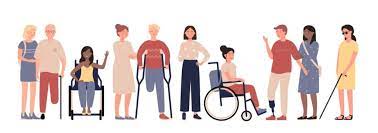Harihar Swarup
On August 15, 2047, India will turn 100. A hundred years of giant strides to becoming the world’s largest democracy and an economic superpower. Morgan Stanley, one of the most influential companies in the world, said last year that three mega global trends, global off shoring, digitalization and energy transition, are setting the scene for India’s unprecedented economic growth. They believe India is set to surpass Japan and Germany to become world’s third largest economy by 2027. Whether citizens with disabilities will be part of this glorious narrative and how are points to ponder on.
Today, there are millions of people living with disabilities in India. Census 2011 pegs us at 26.8 million, constituting 2.21 per cent of India’s total population; but activists, academicians and world bodies like WHO estimate it to be between 40 and 80 million. It is clear that we constitute a significant part of the India’s population and yet remain marginalized and isolated. The question is why?
These are the most favourable times for the people living with disabilities in India. We have a robust rights-based law, a progressive education policy, NEP 2020, and the Accessible India campaign. At the same time, the international development agenda says: “Leave No one Behind”.
Signed into law in 2016, the historic Rights for Persons with Disabilities (RPwD) Act gave India its most comprehensive and robust law to protect our rights. This civil rights law is designed to ensure that we have the same law and opportunities as everyone else by promoting an enabling environment and prohibiting discrimination in education, employment, transportation and other aspects of public life. The RPwD Act also increased the quota for disability reservation in higher educational institutions to five per cent and government jobs to 4 per cent. Accessibility has become a right. To create a barrier-free environment for independent, safe and dignified living, the government launched the Accessibility India campaign in 2015.
Yet, in India, people with disabilities have poorer health outcomes, lower education achievements, less economic partition and higher rates of poverty. Women and girls with disabilities are further subjected to multiple layers of discrimination. Unemployment rates are highest among them. Women with disabilities often face disproportionately high rates of gender-based violence, sexual abused, neglect, maltreatment and exploitation.
This is perhaps because we are limiting ourselves to only drafting the best laws and policies. Such interventions cannot create an enabling environment by themselves. People with disabilities are fighting cases of non-implementation by several state governments in various high courts. Only by proper operationalisation of laws and policies can we bring about positive changes in the lives of the disabled in India. To ensure this, we need to focus on four things-disability-specific data, accessibility, finances and awareness.
There is a dearth of data on disability and disabled people in India. Data is needed to ascertain the services and finances to be provided. Policy makers and practitioners to tend to leave out people with disabilities in various programmes due to the unavailability of data. It is crucial to create and manage disability-specific disaggregated data across sectors of health, education, poverty alleviation, law and order, sports and culture.
Living in a world not built for us is a huge challenge. Without options to travel freely and independently and use public space, people with disabilities will continue to lack access to education, health care, employment, housing and system of social protection. They will continue to face stigma, discrimination, and even violence. The principles of “universal design” must be followed to make places, transport, websites, information and processes (meetings, processions etc) accessible. (IPA)
Trending Now
E-Paper


